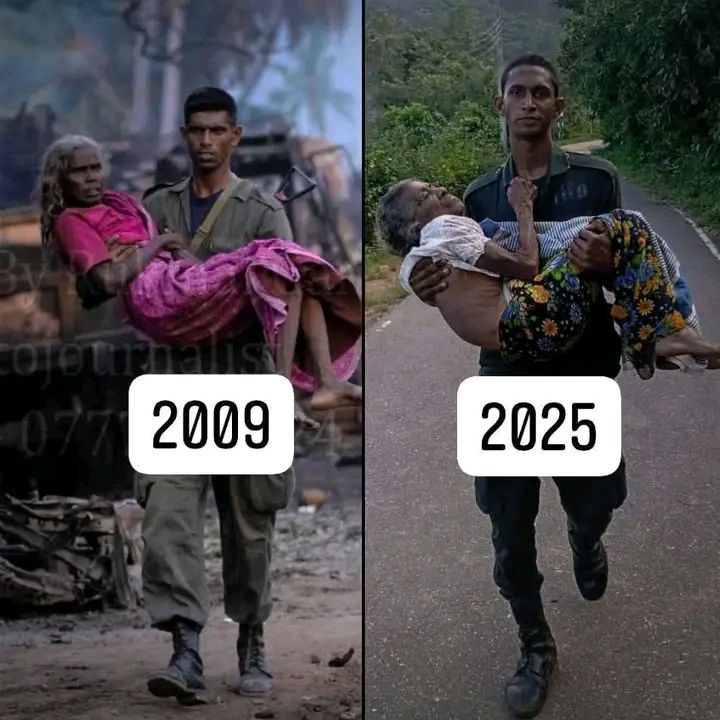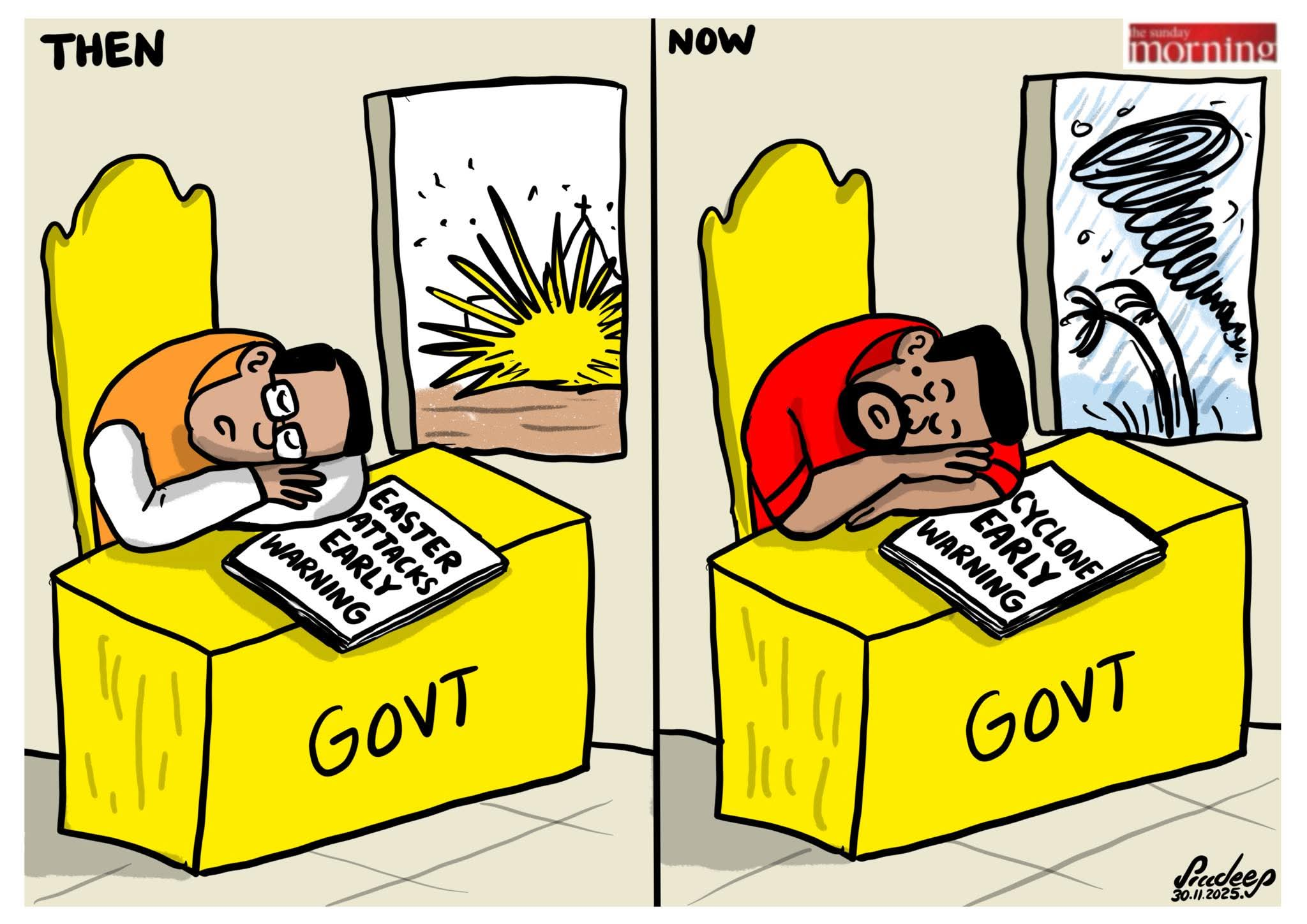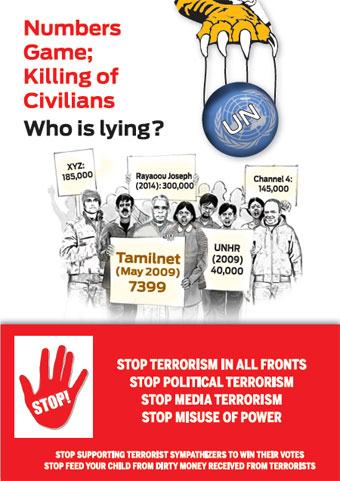Norway, Main Venue For LTTE Terror Revival
By Camelia Nathaniel
(Courtesy of Sunday Leader)

After a hiatus of four years, an attempt to revive the LTTE was spearheaded by the group of Nediyawan-Irumporai. From its safe haven in Norway, a traditional base for LTTE operations, the Nediyawan-Irumporai Group is determined to plunge Sri Lanka back to conflict. Although enabled by two other factions – the Global Tamil Forum (GTF) in the UK and the Transnational Government of Tamil Eelam (TGTE) in the US – LTTE headquarters in Norway, Nedre Rommen 3 B, 0988 Oslo
Nediyawan-Irumporai Group and the Headquarters Group in France want a return to violence.

LTTE TYO activist from Norway – seated the
front row holding a camera is Nirmalan Selvarajah,
the currant deputy head of Annapupathi school in Oslo
Of the four LTTE factions, Nediyawan-Irumporai Group is the largest and the most resourceful. It is ironic but true that the Nediyawan-Irumporai Group is partially subsidized by the Norwegian government.
With its headquarters in the heart of Europe, Nediyawan inherited the massive LTTE global network that hitherto supported the violence in Sri Lanka.
Together with his deputy Nanthagopan, Nediyawan united many of the disparate structures under Castro’s LTTE International Secretariat from Canada to Australia. Clandestinely, Nediyawan is working with two of his associates – Irumporai now in Germany and Arivu now in Canada. However, despite the arrest of his deputy Nanthagopan in Iran and his subsequent deportation from Malaysia to Sri Lanka in March of 2014, Nediyawan was able to sustain the LTTE. Until his arrest, Nanthagopan worked with a New Zealand citizen, Irumporai, who married a girl from Germany and directed the LTTE lobbying in Geneva during the UNHRC meeting.
One of the wealthiest by inheriting LTTE assets, Arivu relocated to Canada on board a LTTE organized ship, MV Sun Sea. Arivu received assistance from LTTE Canada, and is marking time in classic LTTE-style to obtain Canadian papers before surfacing to lead LTTE North American operations.
After the defeat of the LTTE in Sri Lanka and the arrest of K.P., Prabhakaran’s successor, paved the way for Nediyawan’s rise. From the Norwegian village of Eidsvag outside Oslo, a ‘tall man’ called Nediyawan today coordinates LTTE international activities to revive the group.
He was supported by Sivagowri, a professional physiotherapist. Nediyawan saw her when she was a guest announcer at Thainilam (Motherland), the Oslo studio of TTN, the LTTE TV station. Sivagowri’s father Shanthamohan’s brother was Ranjanlal Gnanendramohan alias Lala Ranjan, a well known LTTE pioneer. Although they were from different castes, Prabhakaran proposed the marriage.
However when the war ended, the Norwegian authorities visited and demanded that Nediyawan stop his activities, but he was unrelenting. Evading the Norwegian law, Nediyawan created an LTTE front, the Tamil Eelam Peoples Assembly (TEPA: Makkal Peravai), recently designated under United Nations Security Council Resolution 1373. Today, four factions of the LTTE suffer from infighting but on common issues they work together. On fund raising, still quite lucrative, they work independently but on lobbying human rights bodies, they work in parallel.
While Vinayagam’s Head Quarters Group collaborates with Rudrakumaran’s TGTE, Nediyawan collaborates with GTF’s Fr. Emmanuel. Although GTF has no dedicated office in Norway, the Norwegian Council of Eelam Tamils (NCET) is a GTF member.
The core strength of Nediyawan-Irumporai Group is Noway where 325 LTTE activists serve full time. While LTTE activists run schools, offices, and businesses, only 20 are LTTE cadres. The cadres control the entire network, issue directives, and brutally punish those who oppose them. The LTTE Norway annual income is derived from the public (bank to bank monthly transfer, event collection, and door to door fundraising) businesses, and government grants. During the war, the LTTE Norway raised 20 million kroner per annum.
Today, the public collection is estimated at 5 million Kroner or USD one million. They collect from the Tamil community, (previously for war and now under the pretext of ‘for war affected’), and maintain permanent investments (TV and radio through subscription and advertisement, entertainment shows, night clubs, supermarkets, travel agencies and other businesses).
The LTTE’s biggest source of income is from the Government of Norway where 55 of its cultural organizations receive grants. According to LTTE audit report, LTTE schools received 13.5 million Kroner or USD 2.4 million per year from 2008-2012 from the Norwegian government.
The LTTE and its constituent units are legally registered under the Norwegian constitution.
The Functional and Regional structures of LTTE in Norway are among the best organized LTTE infrastructure. Although the LTTE has established a strong presence in Canada, UK, France, and Australia, the difference is that serving LTTE cadres openly run the operations in Norway.
Another unique feature of the Norwegian LTTE is that its operations are heavily subsidized by the Norwegian government. The LTTE has effectively penetrated the Norwegian educational, social and political system. As most expatriate Sri Lankans live in Oslo and Bergen, the LTTE influence is strongest in these two areas.
An elaborate organization, the LTTE Norway is divided into several branches.
They include the Administrative Wing, Tamil Coordinating Committee (TCC) and the supreme body for administering the entire organization both in Norway and overseas. TCC operates throughout Norway through its network of schools. The TCC name board is only seen in Oslo, where the LTTE HQ is located, and also in Bergen.
The human resource wing, Tamil Foundation Resources and Information Centre, is located in the same premises as TCC.
The political wing, Norwegian Council of Eelam Tamils (NCET) funded by TCC is attempting to control and influence the lives of all Tamils and lobby Norwegian opinion on Sri Lanka.
1217 Viewers








